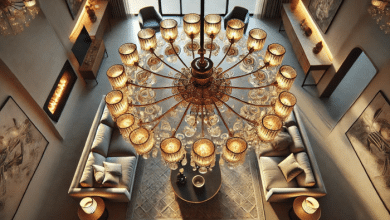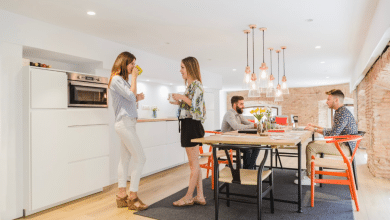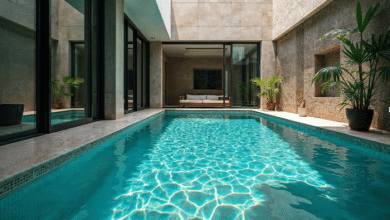
Sustainable living is no longer just a trend—it’s a necessity. As more homeowners look for ways to reduce their carbon footprint, eco-friendly home design is gaining popularity. From energy-efficient appliances to sustainable building materials, green features can help create a healthier home while lowering utility costs.
By blending traditional charm with energy efficiency, homeowners can enjoy both style and sustainability!
Energy-Efficient Insulation and Windows
One of the easiest ways to make a home more sustainable is through proper insulation. High-quality insulation reduces heat loss in winter and keeps the home cool in summer, lowering energy consumption. Double-glazed windows also play a crucial role by preventing heat transfer and improving indoor comfort.
Solar Panels for Renewable Energy
Harnessing solar power is one of the best ways to reduce reliance on fossil fuels. Solar panels can generate electricity for household use, and excess energy can be stored in batteries or fed back into the grid. Many homeowners also install solar hot water systems to further cut energy costs.
Sustainable Building Materials
Eco-friendly homes prioritize materials that are durable, non-toxic, and sourced responsibly. Options like recycled timber, bamboo flooring, and reclaimed bricks add character while minimizing environmental impact. In French Provincial homes in Sydney, using sustainable stone or timber cladding can maintain the architectural style while promoting sustainability.
Water Conservation Systems
Reducing water waste is another important aspect of green home design. Rainwater harvesting systems collect and store rainwater for irrigation, flushing toilets, and other non-drinking purposes. Low-flow fixtures and dual-flush toilets can also significantly cut water usage without sacrificing functionality.
Passive Design Principles
A well-designed home takes advantage of natural light and ventilation to reduce reliance on artificial heating and cooling. Large windows, skylights, and strategically placed openings can maximize airflow and natural lighting, making the home more energy-efficient. North-facing orientation is particularly beneficial in Australia, as it allows for better sun exposure in winter while minimizing heat gain in summer.
Smart Home Technology for Efficiency
Integrating smart home technology can enhance energy efficiency by allowing homeowners to control lighting, heating, and cooling remotely. Automated systems can adjust settings based on occupancy, preventing unnecessary energy consumption. Smart thermostats, LED lighting, and energy-efficient appliances contribute to a greener home.
Green Roofs and Vertical Gardens
Green roofs and vertical gardens not only enhance a home’s aesthetic appeal but also provide insulation and improve air quality. These features reduce heat absorption, lower cooling costs, and create a natural habitat for pollinators and birds.
Non-Toxic and Eco-Friendly Paints
Traditional paints contain volatile organic compounds (VOCs) that release harmful chemicals into the air. Choosing low-VOC or natural paints improves indoor air quality and reduces health risks for occupants. These paints are available in a variety of finishes, making them an excellent choice for sustainable home design.
Sustainable Landscaping
Eco-friendly landscaping involves native plants, drought-resistant gardens, and water-efficient irrigation systems. By choosing plants suited to the local climate, homeowners can create a beautiful outdoor space that requires minimal water and maintenance. Permeable paving also helps reduce stormwater runoff, promoting better drainage and groundwater replenishment.
Sustainable home design is about making thoughtful choices that benefit both the environment and homeowners. Whether you’re building a new house or renovating an existing one, incorporating eco-friendly features can improve energy efficiency, lower costs, and create a healthier living space.




